Vanuatu – mind blowing
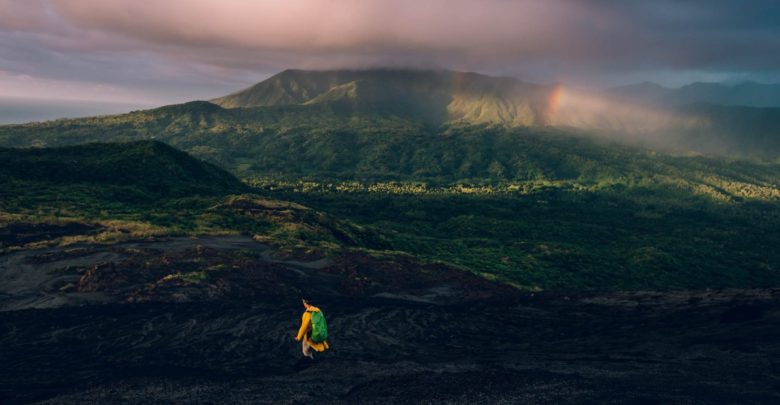
Vanuatu – mind blowing
We’re getting our minds blown over here. Seems that there’s more adventure to be had on Vanuatu than trying out a dicey daiquiri at the resort. Adventuring in paradise actually can be the volcano-summiting, blue-hole-diving, palm-tree-chillin’ cliché you’ve been yearning for. Santo, Tanna and Efate are 3 of the best adventure islands in Vanuatu – get ready – Joel’s about to re-write your bucket list.
What’s on your bucket list? We’ve all got one, whether written down or loosely formed in your head, constantly changing as we hear about new experiences. But how often do you really get to do that? How often in a year to you get to have ‘the experience of a lifetime’?
What if I told you that there is a place where you can stare into the crater of an active volcano and climb a banyan tree the size of a soccer field – in the same day. Where culture, custom and magic are still a part of daily life and people speak over 100 languages, the highest linguistic density on the planet. Where, in addition to the best beaches in the Pacific, you also have a wild inland wilderness to explore, with caves, canyons and sparkling blue holes in the jungle. Where it’s 23-28 degrees – year round. Which has been voted the happiest place on earth – twice.
You’ve probably heard of it before – but you’ve never heard about the adventure potential of Vanuatu. And with 83 islands to explore, all with very different characters and environments, you could come back every winter of your life and still not see it all. Here’s a quick guide to just 3 of Vanuatu’s islands.
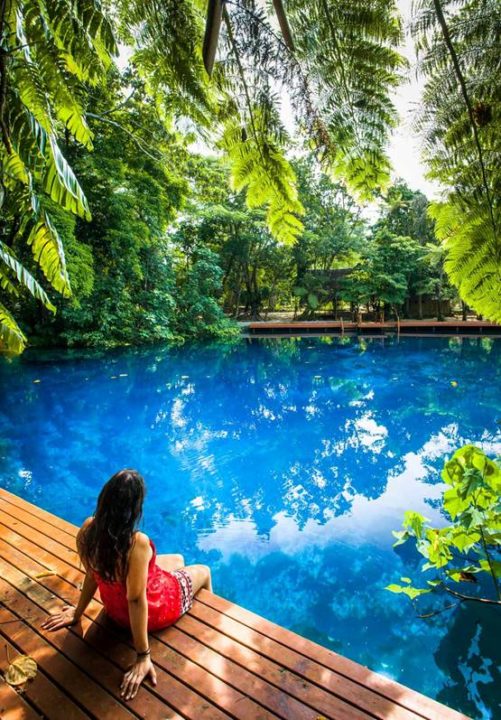
Photo by Joel Johnsson | @aesthetics.of.adventure
Santo
Santo is the largest of the 83 islands of Vanuatu, and while the main city of Luganville has modern supermarkets and restaurants, the entire centre and west coast of the island is virtually inaccessible with villages that hardly ever see white people and still retain a vibrant culture steeped in tradition and black magic.
Santo also has Vanuatu’s highest mountain, Mount Tabwemasana, a 3-day ascent on rough-cut jungle tracks with local guides, and longest river, the Jordan River which winds its way over 50 kilometres from the highlands to the volcanic black sand beaches at Matanta. Understandably then, the potential for Type 2 adventure on Santo is pretty high.
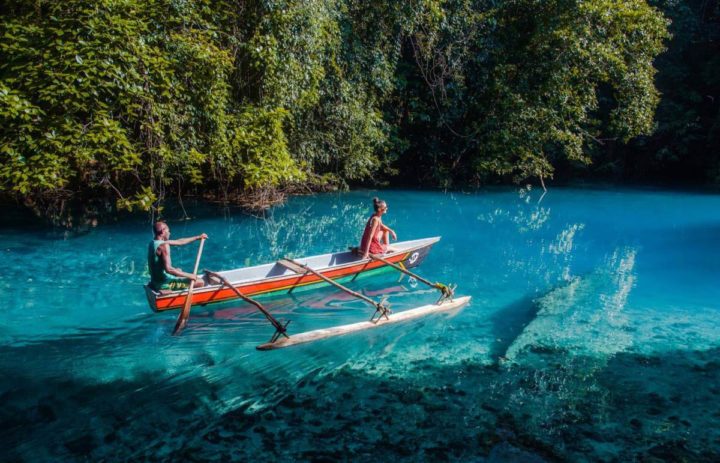
Photo by Joel Johnsson | @aesthetics.of.adventure
But Santo’s incredible natural beauty is also accessible to everyone, regardless of whether you have 2 days or 2 weeks. The East Coast Road runs past the islands’ unique Blue Holes, deep pools of springwater that sparkle a rich aquamarine and azure against the lush greens of the jungle. It’s also the road to some of the best beaches in the South Pacific – Champagne Beach, where you can walk along the huge tree branches, all carpeted in ferns and vines, that stretch out over the white sand, and Port Orly, with its local beach shacks which look over the tropical waters to the small offshore islands that surround the wide bay, selling lobster and coconut crabs.
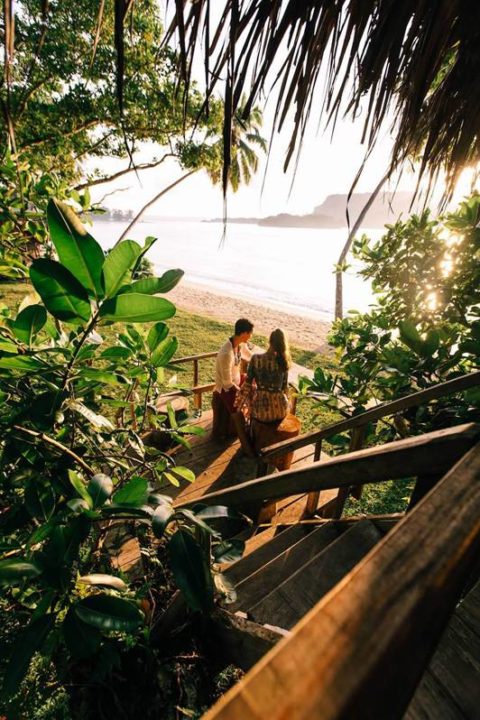
Photo by @henry_brydon
For those looking for something a bit more adventurous, Millennium Cave is a full day excursion of hiking, caving and canyoning in some of the most beautiful jungle that you’ll ever see. And Santo also has some of the best wreck diving in the world, with the 200m luxury cruise liner SS Coolidge only a 15 minute drive from the main town of Luganville, as well as Million Dollar Point, where you can dive or snorkel amongst tanks, bulldozers, jeeps, and trucks dumped by the Americans after the Second World War.
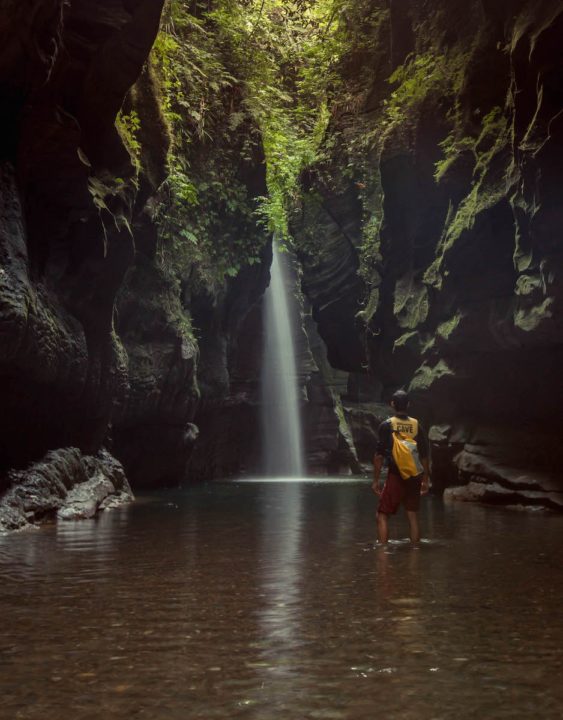
Photo by @henry_brydon
Santo is easy to get to, with direct flights from Brisbane, and has a wide range of accommodation options for travellers. If you plan to do some of the many diving, horse-riding, kayaking, snorkelling, canyoning or river-floating tours, it’s best to spend a couple of days based in or close to the main town of Luganville at the south-eastern corner of the island. Most tours will include a transfer from any of the main hotels or resorts in Luganville.
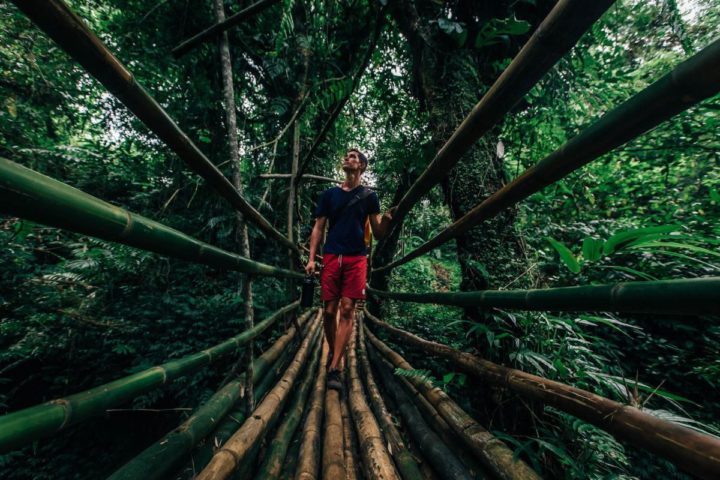
Photo by @henry_brydon
After that, get out of town and base yourself closer to the Blue Holes and beaches on the quieter eastern side of the island for a few nights. There are plenty of modern accommodation options on the East Coast Road around Barrier Beach or Turtle Bay – or, if you’re happy with a basic island bungalow (cold showers and solar lighting only), you could be waking up in a treehouse, right on the sand at Port Orly. Alternatively, if you’re after a bit of luxury and opulence, get off the mainland and spend some time at the private island resorts such as Aore Island, Bokissa Island or Ratua, which is one of Vanuatu’s most unique luxury resorts, built in the style of a traditional Balinese village. You can find out about these and many other options through the fantastic Santo Travel website.
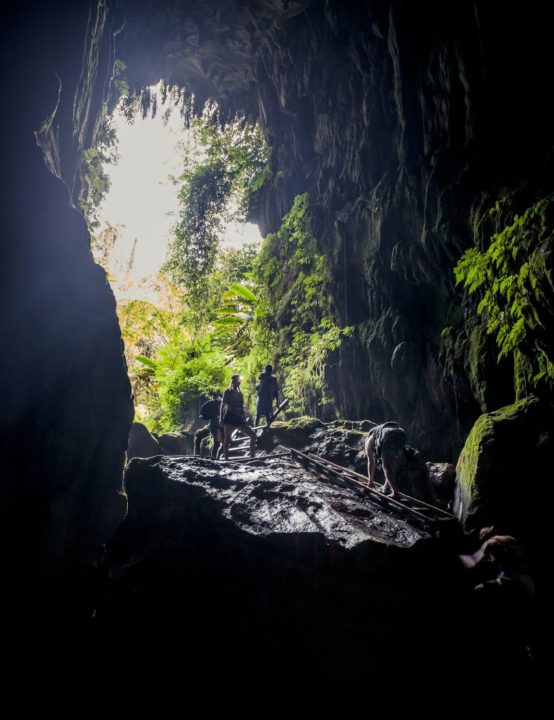
Photo by Joel Johnsson | @aesthetics.of.adventure
Tanna
If Santo is a water paradise, Tanna is the island of fire. Dominated by Mount Yasur, the most accessible active volcano in the world, Tanna holds a wealth of other treasures for people willing to extend their stay – black sand beaches, hidden waterfalls and steaming hot springs.
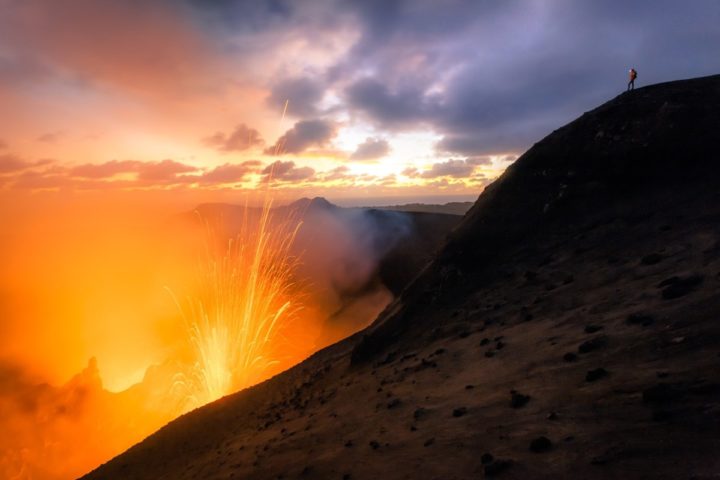
Photo by Joel Johnsson | @aesthetics.of.adventure
In the hinterland, there are a number of traditional ‘kastom’ villages, like Ikunala, Yakel or Imaio, which welcome visitors and provide insight into the local way of life. Or release your inner child and climb into the towering limbs or crawl through the tunnels of exposed roots of the largest Banyan tree in Vanuatu, the size of a football field, which is still taking over the trees and surrounding forest around it. And perhaps the overlooked jewel in Tanna’s crown is the Blue Cave, a subterranean cavern which you access by diving into an underwater tunnel from the ocean, where the water glows iridescent blue all around you from the perfect shaft of sunlight flooding in from the hole at the top of the cave.
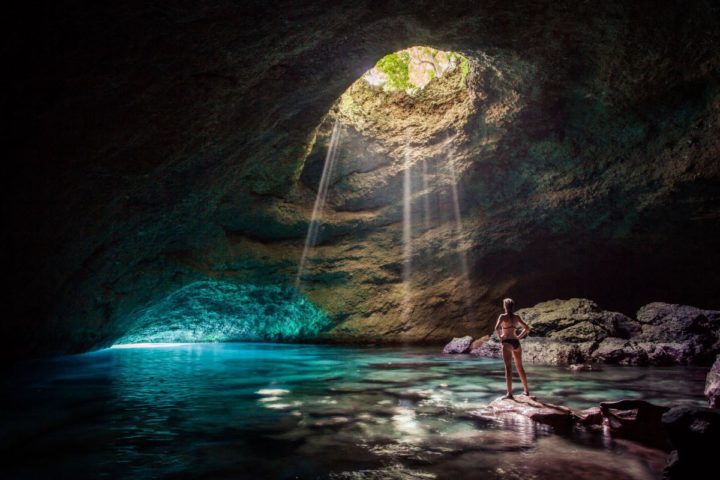
Photo by Joel Johnsson | @aesthetics.of.adventure
Most of the amenities, including the main town of Lenakel, are on the western side of Tanna, which is also where the tours to many of the waterfalls, the Blue Cave and Giant Banyan Tree start from. It’s also the location of the airport, so staying on this side either at island bungalows or the western-style resorts like Whitegrass, Evergreen or Rocky Ridge is convenient for early or late flights.
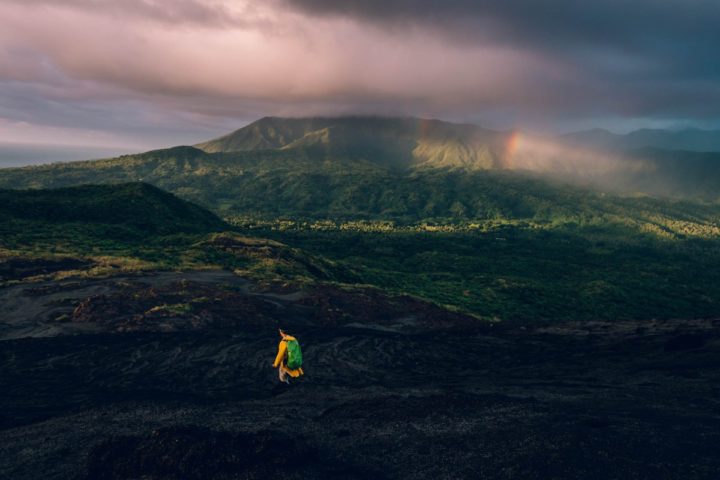
Photo by @henry_brydon
Tanna’s main attraction however, Mount Yasur volcano, is on the eastern side of the island, linked by a rough unsealed road which takes around 2 hours to travel and is sometimes cut during heavy rain – not ideal if you want to be there for sunrise or sunset, when the crater is most spectacular!
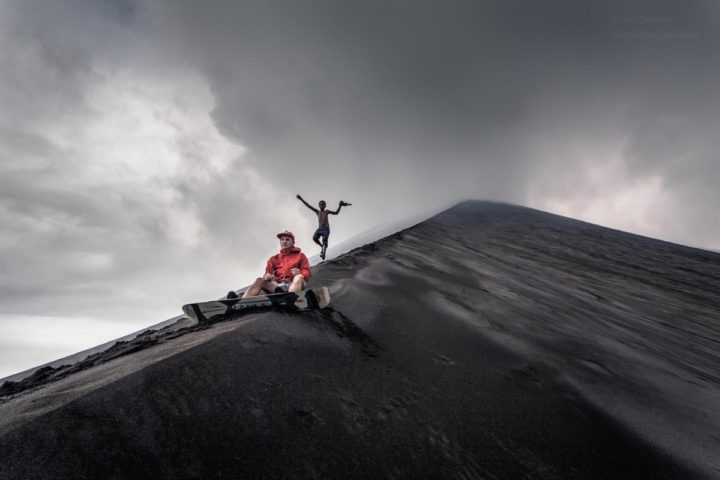
Photo by Joel Johnsson | @aesthetics.of.adventure
Thankfully, at the base of the volcano, there are a number of island bungalows and treehouses which are front-and-centre to the action – from here you can look out through your bedroom window to the fiery glow of the volcano at night, and listen to the sounds of eruptions rippling across the evening sky. Ideally, stay at the local bungalows near the volcano for one or more nights to do a sunset or sunrise visit to the crater (or both!) then spend another couple of days on the western side of the island taking in the other sights (and washing the sulphur out of your hair with a hot shower!). There’s not a lot of options for food in Lenakel, just the market and some basic convenience stores, so eating meals at your bungalow or resort is common practice.
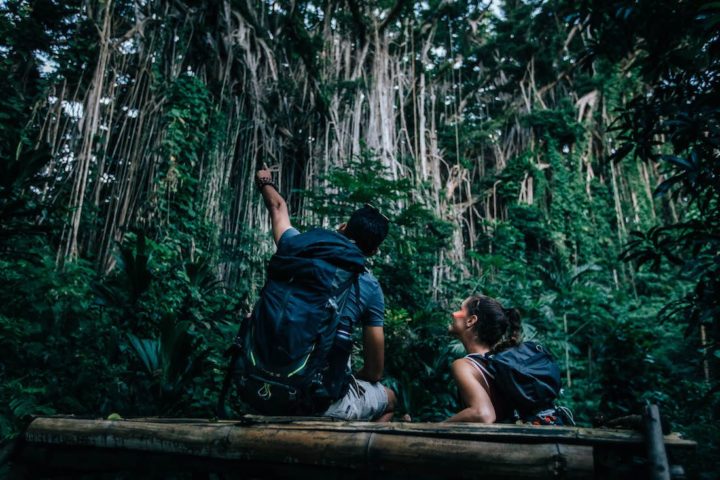
Photo by @henry_brydon
Efate
Efate is the bustling hub of Vanuatu, the capital, and the landing point for most international travellers. But take the time to get out of the city of Port Vila and there are some amazing natural and cultural experiences accessible to all, whether you have an hour or a day.
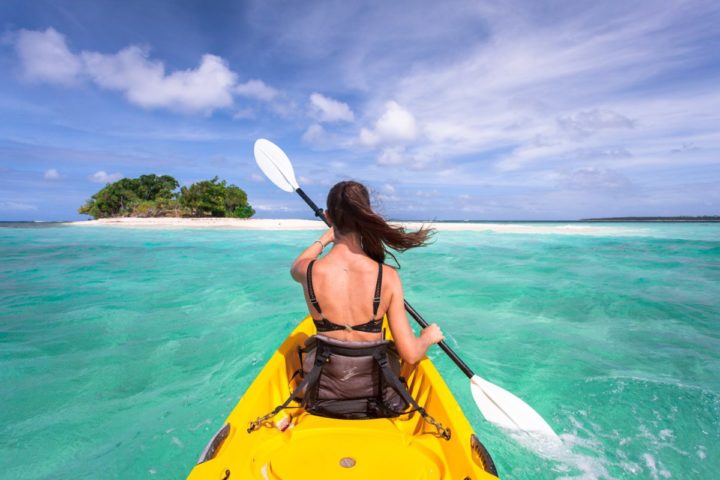
Photo by Joel Johnsson | @aesthetics.of.adventure
In fact, you can skip the city altogether and drive (or hire a driver) to take you around to the northern side of the island, where you get a boat to take you over to Pele or Nguna islands which are populated entirely by ni-Vanuatu people (and the odd adventurous westerner).
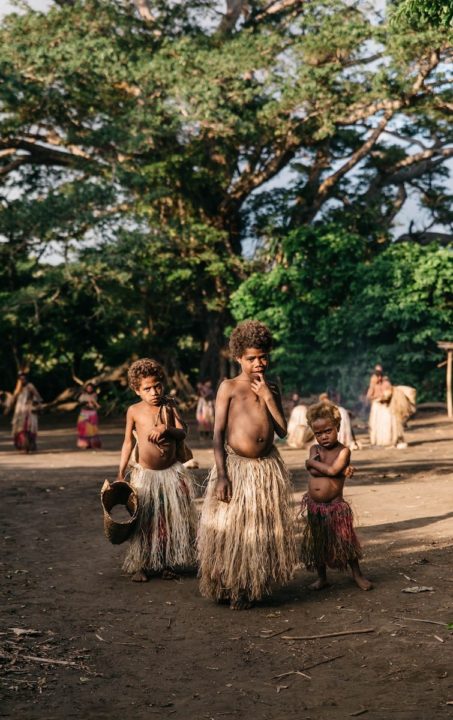
Photo by @henry_brydon
Stay the night at one of the local bungalows, spend some time with the locals in the villages, hike up the extinct volcanic cones and snorkel in the pristine marine reserves – all within a half-day from the nation’s capital. If that doesn’t give you your fill of island hopping, hire a kayak or charter a trip on the traditional Polynesian vessel Okeanos. Close to Vila, you can cool off at the Mele Cascades or the blue lagoon, or jump on a mountain bike and cruise through the villages tucked away in the forests along the coasts and in the foothills. One of the best waterfalls on the island of Efate is Lololima Falls, which can be booked though Vanuatu Ecotours and is a 45min drive out of Port Vila on rough tracks. The multi-tiered, cascading waterfall features a cave underneath the main falls and a short section of canyon to explore.
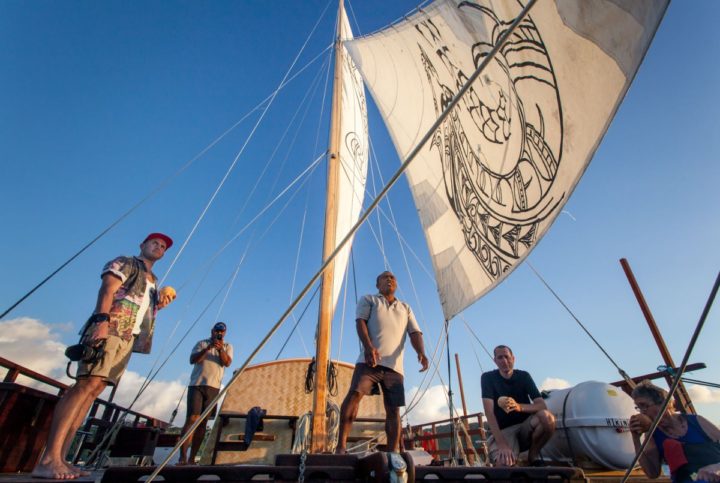
Photo by Joel Johnsson | @aesthetics.of.adventure
There are a multitude of hotels and resorts in the main town of Port Vila that provide a comfortable base for exploring the island as well as access to great restaurants. Make the time to go to the new handicraft market on the waterfront, which features an amazing array of products from all over the islands, and the main produce market to see the tropical fruits, flowers and food and have a chat with the local “mama’s”.
While you can drive around the whole island in a few hours, making everything accessible within a day trip from the capital, you might also choose to stay at the quieter bungalows on the northern side of the island or on one of the smaller outer islands to really get amongst it.
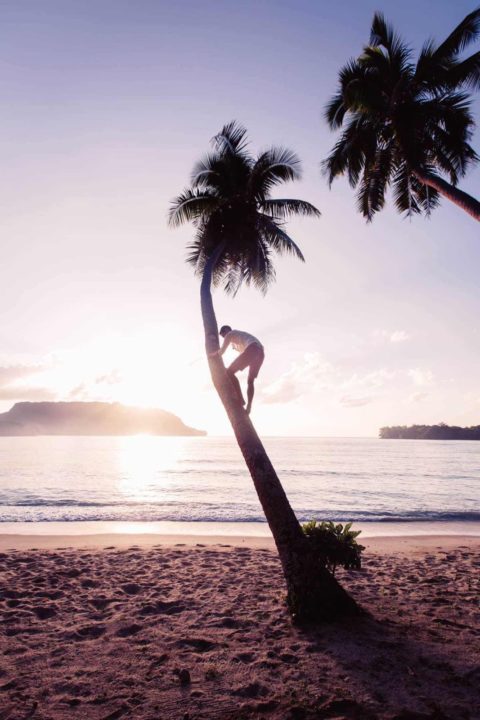
Photo by @henry_brydon
General Tips For Adventuring In Vanuatu
– Air Vanuatu flights regularly service Sydney and Brisbane airports, with connections via the Qantas network with all the other major cities in Australia. Most international flights go straight to Port Vila, which is the hub for all other island connections. However, there are also direct flights to Brisbane to Santo which run a couple of times a week.
– Dry/winter season in Vanuatu is from May to October, when it’s also a bit cooler – but it’s all relative, as winter temperatures still average around 23⁰! The hotter wet season (November to April) is much more humid and unpredictable with weather, though it’s often characterised by regular rain storms in the afternoon and evening rather than rain for days on end. You also have the added bonus of far fewer people during this time, but if you’re planning to go to remote villages or do some trekking, it’s best to avoid the mud and go in dry season.
– It’s a good idea to bring reef shoes or water shoes, as much of the tropical waters are ringed with coral or rock which isn’t pleasant on feet.
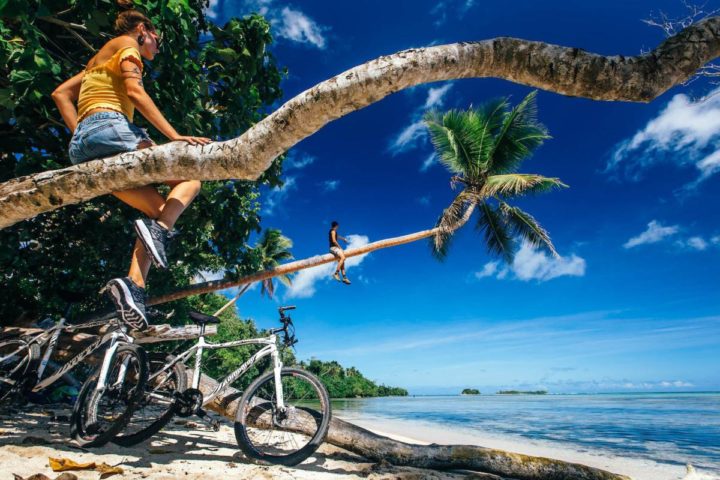
Photo by @henry_brydon
– On Tanna, and wherever you’re going to be out of the main towns of Port Vila and Luganville, you’ll need cash in local currency – don’t expect there to be ATM’s or EFTPOS. You can withdraw local currency with most Australian bank cards from the local ATM’s at the airports or in Vila or Luganville.
– If you’re staying in island bungalows, it’s also a good idea to carry a small torch, a powerbank to charge your electronics, and some bottled water and snacks. You’ll probably get mosquito nets on your bed, but personal repellent and/or mosquito coils is a must. Expect cold showers and solar lights only – but in return, you get to wake up in the most spectacular locations in all of the Pacific.
– It’s easy to get around on public transport in Vanuatu, which is like a national example of Uber-gone-wild. Most vehicles on the road will take you where you want to go – in Vila, it’s mainly mini-buses with a red ‘B’ on their number plate, while in Santo it’s almost exclusively small taxis with a ‘T’. Just flag a driver down, tell him where you want to go and jump in if he’s going that way. Often there will be other people in the car and stops along the way, but the price is fixed – 150 vatu in Port Vila and 200 vatu (around $2.40) in Santo for trips around town. On Tanna, transport is harder to find and more expensive – it’s usually better to book ahead or let your accommodation organise your transfers.
– Bargaining and tipping aren’t part of the culture here, though you can negotiate with taxi drivers for longer trips or prices for full day hire.
Plan Your Trip!
To plan your trip, visit the Discover Vanuatu website, while for more detailed information on booking tours and accommodation on each of the islands, contact the Santo Travel Centre, Tanna Travel Centre or Malampa Travel Centre.
For more ideas and inspiration, follow Vanuatu Tourism’s Facebook Page or check out our guide to the best adventure experiences in Vanuatu!


